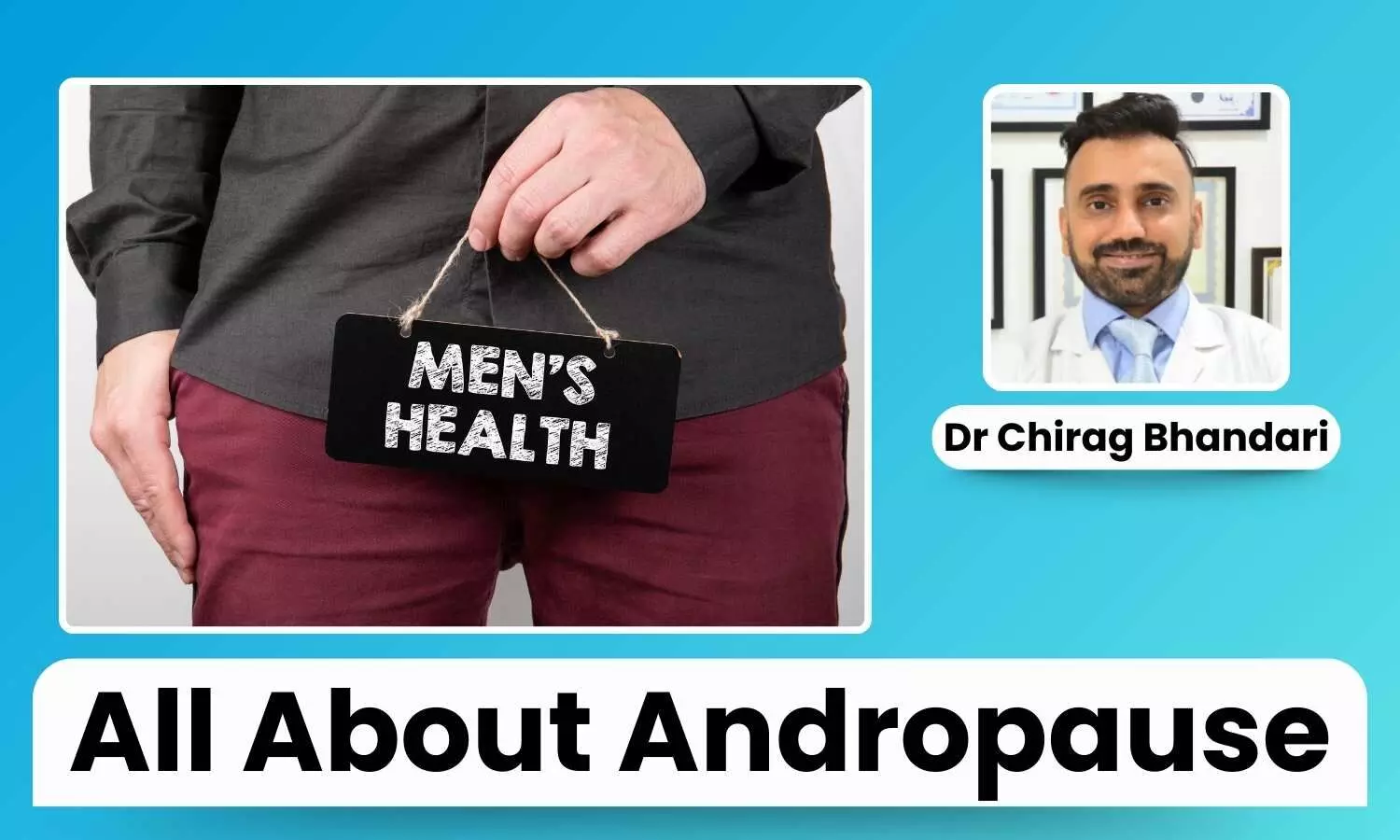Does Male Menopause Exist? Understanding Andropause Symptoms and Treatment - Dr Chirag Bhandari

As men age, they may experience a gradual decline in testosterone levels, leading to a condition often referred to as "male menopause" or andropause. Unlike female menopause, which involves a rapid decrease in hormone levels, andropause is characterized by a more gradual reduction in testosterone, typically beginning in the mid-30s and continuing at about 1% per year.
What is Andropause?
Andropause is associated with a range of symptoms that can significantly impact a man's quality of life. Common symptoms include:
- Reduced Libido and Sexual Function: A noticeable decrease in sexual desire and performance.
- Fatigue and Low Energy: Persistent tiredness and a general lack of vitality.
- Mood Changes: Increased irritability, anxiety, or depression.
- Decreased Muscle Mass and Strength: Loss of muscle tissue and physical strength.
- Increased Body Fat: Accumulation of fat, particularly around the abdomen.
- Cognitive Difficulties: Problems with concentration and short-term memory.
It's important to note that not all men will experience these symptoms, and their severity can vary. Some men may have low testosterone levels without noticeable symptoms, while others may experience significant effects.
Causes of Andropause
Andropause is primarily caused by the natural decrease in testosterone production that occurs as individuals age. However, other factors can contribute to or exacerbate the condition:
- Lifestyle Factors: Poor diet, lack of exercise, smoking, and excessive alcohol consumption can negatively impact hormone levels.
- Psychological Factors: Chronic stress, anxiety, and depression can influence testosterone production and overall well-being.
- Medical Conditions: Obesity, diabetes, hypertension, and certain infections can affect hormone balance.
Distinguishing between symptoms caused by low testosterone and those resulting from other factors is crucial for effective treatment.
Diagnosis
Diagnosing andropause involves a comprehensive evaluation:
- Symptom Assessment: Discussing the nature, duration, and impact of symptoms with a healthcare provider.
- Physical Examination: Evaluating physical signs such as muscle mass, body fat distribution, and testicular size.
- Blood Tests: Measuring serum testosterone levels, typically in the morning when levels are highest.
It's essential to conduct multiple tests to confirm low testosterone, as levels can fluctuate due to various factors.
Treatment Options
The objective of andropause treatment is to enhance quality of life and alleviate symptoms. Options include:
- Lifestyle Modifications: Adopting a balanced diet, engaging in regular physical activity, ensuring adequate sleep, and managing stress can naturally boost testosterone levels and mitigate symptoms.
- Testosterone Replacement Therapy (TRT): Administered through injections, patches, gels, or pellets, TRT can help restore hormone levels. However, it's not suitable for everyone and may have potential side effects, such as an increased risk of heart attack and stroke.
It's important to talk to a healthcare professional about the possible advantages and hazards of TRT before starting. Regular monitoring is essential to assess effectiveness and adjust treatment as needed.
Controversy and Considerations
The concept of male menopause is subject to debate. Some experts argue that the term is misleading, as the hormonal changes in men differ significantly from those in women during menopause.
Additionally, not all men with low testosterone exhibit symptoms, and some symptoms may be attributed to other health issues or the natural ageing process.
It's important to approach andropause with a comprehensive perspective, considering all potential contributing factors. To choose the best course of action depending on unique circumstances, speaking with a healthcare expert is crucial.
Final Thoughts
While the existence of male menopause is debated, the symptoms associated with declining testosterone levels are real and can affect many men as they age.
Understanding andropause, its symptoms, causes, and treatment options is crucial for managing health and maintaining quality of life. If you experience symptoms suggestive of low testosterone, consult a healthcare provider to explore appropriate diagnostic evaluations and treatment strategies tailored to your needs.


